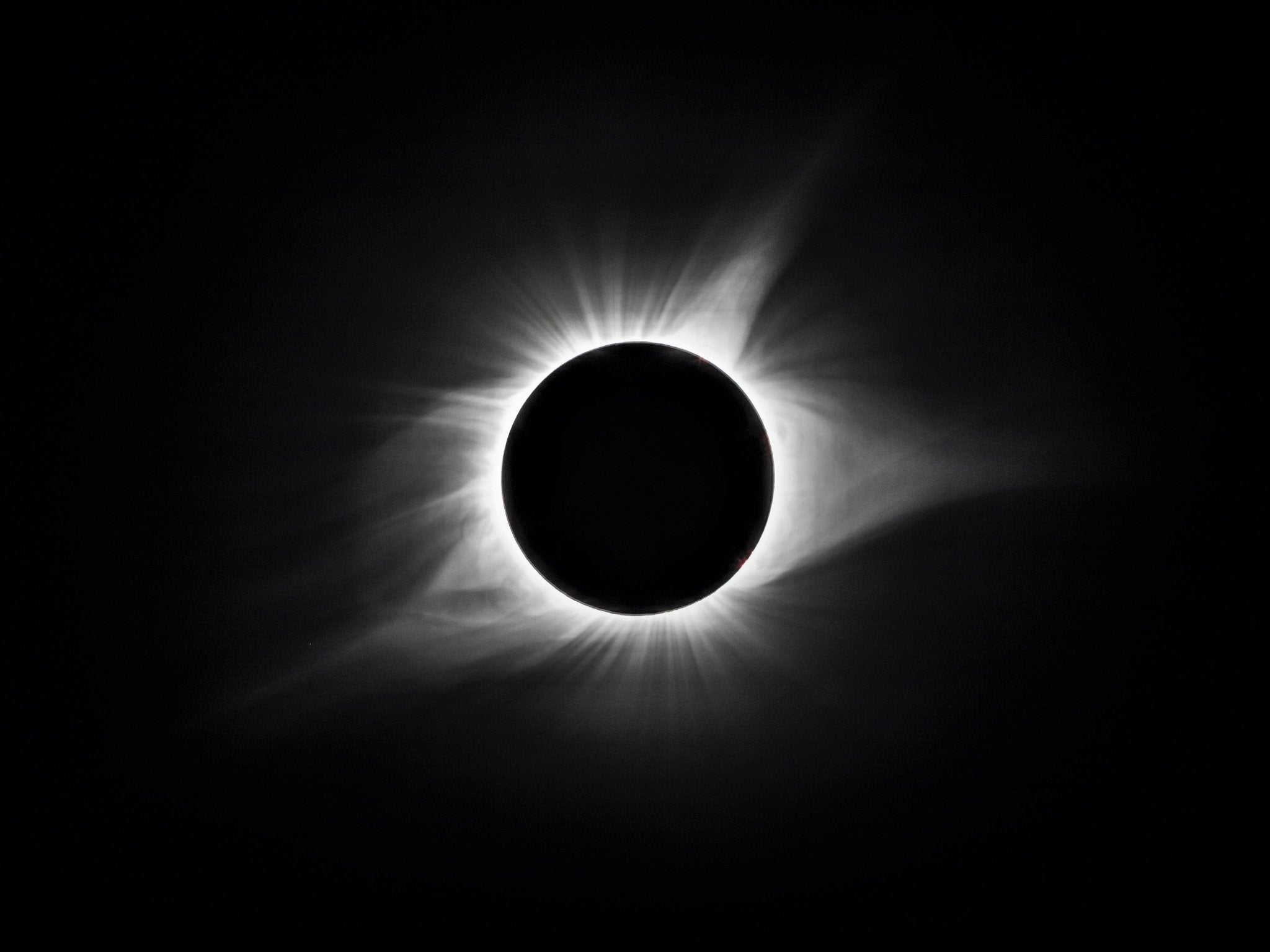Alright, let's dive into the fascinating world of solar eclipses! 🌞🌚
Imagine you're chilling in your backyard, sipping on some iced tea, and suddenly, the day turns into night for a few minutes. No, it's not an alien invasion or a sudden power outage; it's a solar eclipse! But what's the science behind this celestial phenomenon? Let's break it down.
1. The Celestial Dance:
At its core, a solar eclipse is a cosmic ballet involving three main dancers: the Sun, the Moon, and Earth. Picture this: the Moon gracefully glides between the Sun and Earth, casting a shadow on our planet. This shadow creates the darkening effect we observe during a solar eclipse.
2. Types of Eclipses:
Not all solar eclipses are created equal. There are three main types:
- Total Solar Eclipse: The Moon completely covers the Sun, as viewed from Earth. It's like the Moon is giving the Sun a big bear hug! During this, the day briefly turns into night.
- Partial Solar Eclipse: Only a part of the Sun is obscured by the Moon. It's like the Moon took a bite out of the Sun's cookie.
- Annular Solar Eclipse: The Moon is too far away from Earth to completely cover the Sun. This results in a ring of sunlight being visible around the Moon. Think of it as a cosmic donut! This was the type of eclipse that passed over the western US on October 14, 2023.
3. The Moon's Shadow:
The shadow cast by the Moon during an eclipse has two parts:
- Umbra: The central, darkest part where the Sun is completely obscured. If you're in this shadow, you'll experience a total solar eclipse.
- Penumbra: The outer part where only a portion of the Sun is obscured. If you're here, you'll see a partial solar eclipse.
4. The Path of Totality:
This sounds like a cool sci-fi movie title, but it's actually the narrow path on Earth's surface where observers can experience a total solar eclipse. If you're outside this path, you'll only see a partial eclipse. So, if you're an eclipse chaser, this is where you want to be!
5. The Cosmic Coincidence:
Now, here's a fun fact: The Sun is about 400 times larger than the Moon, but it's also roughly 400 times farther away from Earth than the Moon. This cosmic coincidence means that the Sun and the Moon appear to be roughly the same size in our sky, making total solar eclipses possible. Talk about perfect alignment!
6. Frequency:
Solar eclipses don't happen every day. They occur at least twice a year but can happen as many as five times in a year. However, total solar eclipses are rarer, occurring about once every 18 months somewhere on Earth.
7. Safety First:
If you're planning to watch a solar eclipse, remember never to look directly at the Sun without proper protection. Regular sunglasses won't cut it. You'll need special eclipse glasses or viewers to safely observe the event. Your eyes will thank you!
8. The Ephemeral Beauty:
Solar eclipses don't last long. Totality, where the Sun is completely covered, can last for a few seconds to a maximum of about 7.5 minutes. So, if you're lucky enough to witness one, cherish every second of it!
9. Cultural Significance:
Throughout history, solar eclipses have been viewed with awe, fear, and fascination. Different cultures have various myths and legends associated with them. Some saw them as powerful omens, while others celebrated them as special celestial events.
10. The Future:
Eclipses won't last forever! Due to tidal forces, the Moon is slowly moving away from Earth. This means that billions of years from now, total solar eclipses will be a thing of the past. But don't worry, that's a loooong time away.
In conclusion, solar eclipses are one of nature's most spectacular shows, a testament to the incredible alignments and forces at play in our universe. So, the next time you hear about an upcoming solar eclipse, grab your eclipse glasses, gather some friends, and enjoy the cosmic dance! 🌌🕺💃
Hope that sheds some light (pun intended) on the topic! 😉



Share:
Why You Shouldn't Look at an Eclipse Without Eclipse Glasses
Solar Eclipses on Other Planets